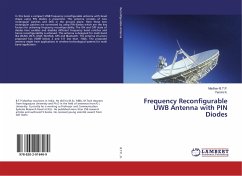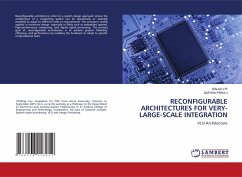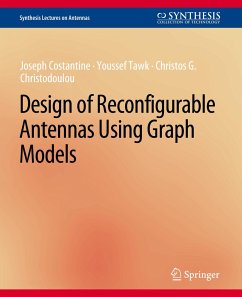
Self-Modifying Circuitry for Trillion-Element Reconfigurable Devices
An analysis of a future computing paradigm for efficient, scalable, defect-tolerant processing
Versandkostenfrei!
Versandfertig in 6-10 Tagen
45,99 €
inkl. MwSt.

PAYBACK Punkte
23 °P sammeln!
As transistors density continues to rise, it becomes increasingly difficult to scale current computing designs to utilize these high transistor counts. This work presents a scalable alternative to the traditional von Neumann architecture, in the form of a self-configurable array of programmable elements. Unlike traditional FPGAs, this architecture utilizes self-analysis and self-modification to address a number of scalability challenges, including handling mixed-granularity designs; handling of defects; and dynamic architecture tuning. Included are details of the basic architecture, examples o...
As transistors density continues to rise, it becomes increasingly difficult to scale current computing designs to utilize these high transistor counts. This work presents a scalable alternative to the traditional von Neumann architecture, in the form of a self-configurable array of programmable elements. Unlike traditional FPGAs, this architecture utilizes self-analysis and self-modification to address a number of scalability challenges, including handling mixed-granularity designs; handling of defects; and dynamic architecture tuning. Included are details of the basic architecture, examples of its application to solving real-world problems, and an analysis of its scalability. Emphasis is placed on the ability of the system's self-configuration mechanism to support efficient parallel bootstrapping of the system. This work also discusses the three-dimensional version of the Cell Matrix, and explores how this extra dimension can be used to more-efficiently solve future problems.












